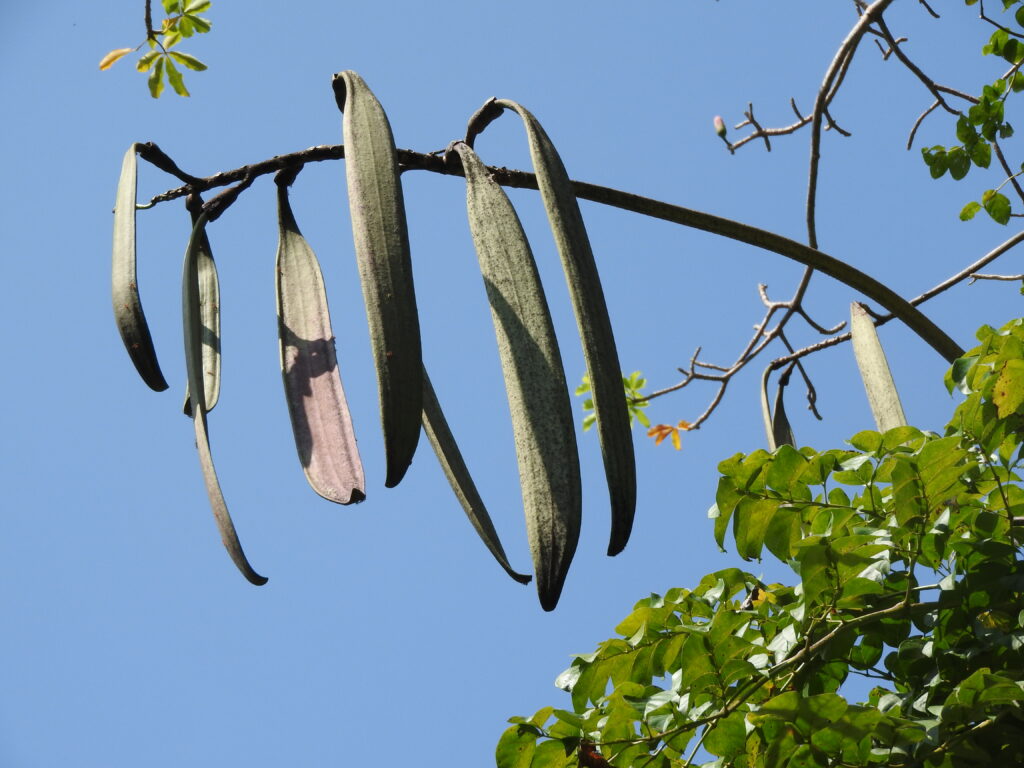Oroxylum indicum is a tree native to the Indian subcontinent. Commonly found in the Himalayan foothills with a part extending to Bhutan and southern China, Indochina and the Malesia regions. It is called núc nác (sometimes sò đo) in Vietnam, and specimens of the same can be found in Cat Tien National Park. It is known as சொரிகொன்றை in Tamil.
It is a medium-sized, soft-wooded tree attaining a height of 10–16 m. Oroxylum indicum’s stem bark is dull brown in colour; leaves are broad, 60–120 cm in length and pinnately compound. Leaflets are ovate, wavy, and acuminate.

It’s Uses
Oroxylum indicum has been used for centuries as a traditional medicine in Asia in traditional medical practices for the prevention and treatment of several diseases, such as jaundice, arthritic and rheumatic problems, gastric ulcers, tumors, respiratory diseases, diabetes, diarrhea and dysentery, among others.
The root of this tree is used as an astringent, anti-inflammatory, aphrodisiac, expectorant, anthelmintic and tonic. Its bark is diuretic and stomachic and useful in diarrhoea and dysentery. The root bark and seeds are carminative, stomachic, tonic, diaphoretic and astringent
Know me scientifically
Tree Type: Oroxylum indicum
Genus: Oroxylum; Vent
Species: O. indicum
Family: Bignoniaceae








